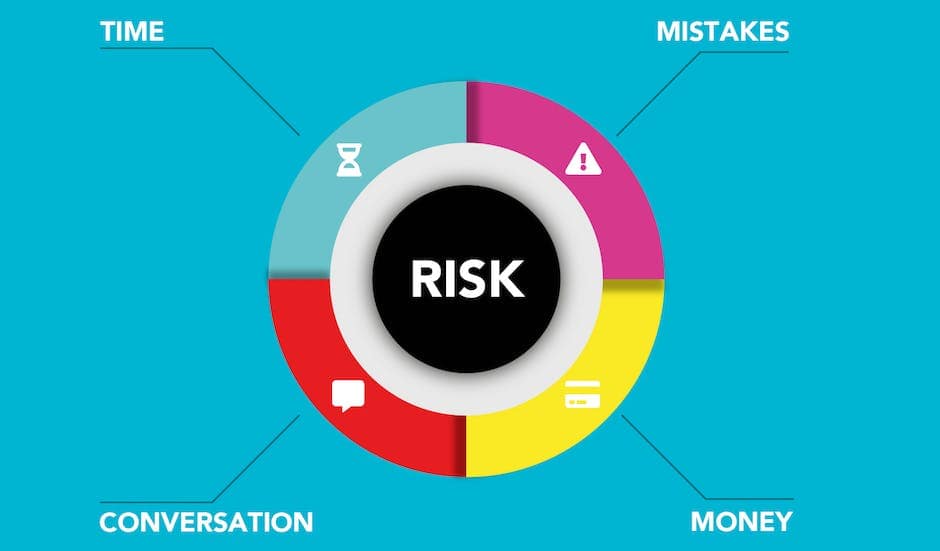In a dynamic and rapidly evolving business environment, organizations must continuously adapt and reinvent themselves to stay competitive.
One crucial aspect of this adaptability is strategic change management, a complex process that encompasses recognizing the necessity for change, planning, implementing, and maintaining the change.
This paper delves into the depths of strategic change management, its core components, critical steps involved, and various models for managing change.
Understanding Strategic Change Management
Strategic change management is a discipline that involves guiding an organization through significant shifts in its current state in an effort to reach a previously defined future state. These shifts could be brought about by internal factors such as organizational restructuring, process improvements, or shifts in company culture. Alternatively, they might be driven by external influences, such as evolving customer needs, market demand, or regulatory changes.
Strategic change management can be crucial for an organization as it facilitates the alignment of an organization’s strategies, structure, processes and culture with the vision and goals of the business. Without effective change management, businesses may fail to perform at their optimal level, which may result in decreased productivity and profitability. Organizations must prepare for changes and anticipate potential obstacles to stay competitive in today’s rapidly changing business environment.
Key Components of Strategic Change Management
There are several key components of strategic change management, all of which play a vital role in the success of any change initiative. One component is the strategic vision, which provides a clear image of the desired future state, thus guiding the direction of change. This vision should be effectively communicated to all members of an organization to ensure understanding and engagement.
Second, there needs to be a structured plan for change. This includes an analysis of the current situation, identification of areas that need change, and developing strategies to achieve the desired outcomes. The plan should also incorporate risk management measures and consider potential resistance to change.
Next, leadership is a crucial element in strategic change management. Leaders play a key role in influencing, facilitating, and driving change within an organization. Their responsibilities often include fostering an environment conducive to change, breaking down barriers, and mobilizing others to participate in the change.
Another critical component is stakeholder management; understanding and managing the diverse interests and influence of different stakeholders is crucial. Both internal stakeholders (employees, management, board members) and external stakeholders (customers, suppliers, investors, regulators, and the community) can significantly impact the success of the change initiative.
Finally, monitoring and evaluation activities must be in place to assess the progress and effectiveness of change initiatives. This includes establishing success metrics, regularly monitoring progress, identifying deviations, and making necessary adjustments.
The Impact of Strategic Change Management on Attaining Organizational Vision and Goals
Strategic change management serves as a fundamental tool for synchronizing an organization’s strategy with its overarching vision and objectives. By facilitating a congenial setting for innovation and growth, it positions the company to readily adapt to ongoing changes. This adaptability could stem from the adoption of breakthrough technologies, restructuring of core business processes, or the establishment of fresh business models.
Moreover, efficient change management can enhance organizational competencies, uplift overall productivity, and foster a competitive edge. All these pivotal factors contribute significantly to the realization of strategic objectives such as heightened consumer satisfaction, market presence, profitability, and sustainability. Therefore, effective strategic change management becomes a cornerstone in achieving an organization’s vision and goals.

The Steps Involved in Strategic Change Management
Recognizing the Demand for Strategic Change Management
The first stride towards adopting strategic change management is grasping its necessity. This phase prompts critical evaluation of the current operating paradigm, analyzing the performance and impact of current strategies.
Unpacking the realization that an existing strategy may not have a sustainable future is key. This could occur due to fluctuations in external elements such as competitor activities, evolving market trends, or advances in technology.
Meanwhile, internal dynamics like an inefficient organizational structure, gaps in performance, or variations in employee morale, may also necessitate strategic adjustments.
A thorough evaluation—typically involving a SWOT analysis, market studies, and internal evaluations—aims to lucidly pinpoint the gaps demanding change, and envisage an effective future course of actions.
Planning the Strategic Change
Once the necessity for change has been identified and accepted, the planning phase begins. This involves setting up clear, achievable, and measurable objectives for the change. The stakeholders for the change must be identified.
This group could include department heads, employees, customers and, in some cases, suppliers or partners.
The communication strategy is another integral part of the planning phase. All stakeholders should understand why the change is necessary, what the benefits are, and how it will affect them.
The change strategy here could be an overarching, company-wide strategy or it may be specific to different departments or functions.
Implementing the Strategic Change
After the change has been planned meticulously, the implementation phase begins. This is where planned changes start to be actualized.
As change is often met with resistance, managers need to employ their skills to lead and manage their teams successfully through the transition.
This could involve training programs, restructuring tasks, modifying systems, or reallocating resources. The idea is to effectively execute the planned change with the least amount of disruption possible.
Monitoring and Sustaining the Strategic Change
Once the change has been implemented, monitoring its progress becomes the main focus. This involves tracking and comparing the outcomes with the planned objectives using the metrics defined in the planning stage. Regular reviews and adjustments should be made based on these findings to ensure the change is successful.
After the change has been successfully implemented, the focus shifts to sustaining the change. This typically requires reinforcing the new behavior, aligning them with the organizational culture and values, and rewarding those who have embraced the change. The aim is to avoid slipping back into old practices.
In any organization, strategic change management is a key component that takes into consideration all the stages of a plan, from identifying the need for change, to implementing it effectively.
Planning the strategic changes, implementing those changes, and then ensuring they remain in effect are all equally important steps. If any one of these steps is skipped or not properly managed, it could have a significant negative impact on the overall success of the change plan.

Change Models in Strategic Change Management
Lewin’s Change Management Model
One of the most renowned models that provide insight into strategic change management was created by psychologist Kurt Lewin in the 1940s.
Known as Lewin’s Change Management Model, it categorizes the process into three stages: Unfreezing, Changing, and Refreezing.
During the Unfreezing stage, it requires disrupting the current attitudes and behaviors in an organization.
The Changing period sees the implementation of the decided strategies and new behaviors.
Lastly, during the Refreezing stage, the new behaviors and strategies are consolidated and made routine.
Despite its structured approach and simplicity, this model does attract criticism for not taking into account the complexities and unpredictabilities that often characterize the change process. This is particularly relevant in environments where change is a constant feature.
McKinsey 7-S Model
The McKinsey 7-S Model is a tool designed by Robert H. Waterman Jr. and Tom Peters in 1980. This model stresses the interconnectedness of seven elements—structure, strategy, systems, skills, style, staff and shared values—and posits that organizations must align all seven elements to successfully implement strategic change.
This model places equal emphasis on hard (Strategy, Structure, Systems) and soft (Shared Values, Skills, Style, Staff) elements, recognizing that neglecting any one could impact the overall effectiveness of strategic change. However, the challenge is to deal with all seven elements simultaneously, which can be tedious and time-consuming.
ADKAR Model
Prosci’s ADKAR Model, developed by Jeff Hiatt, is a goal-oriented change model that allows change to be understood and managed from an individual perspective. ADKAR stands for Awareness, Desire, Knowledge, Ability, and Reinforcement.
Each element identifies a key goal and outcome for change management to be effective. The main strength of ADKAR Model is that it focuses on individuals in the change process.
As changes in companies ultimately boil down to changes in the behavior of individuals, this becomes a critical factor. The limitation is it may not comprehensively account for external factors affecting the organization.
Kotter’s 8 Step Change Model
John Kotter, a professor at Harvard Business School, developed a change management model that focuses on accepting and preparing for change instead of resisting it.
The eight stages in this model are creating a sense of urgency, forming a powerful coalition, creating a vision for change, communicating the vision, removing obstacles, creating short-term wins, building on the changes, and anchoring the changes in the corporate culture.
The biggest strength of this model is its comprehensiveness and focus on all stages. However, it is often criticized for being a linear, top-down approach that may not be flexible enough in rapidly changing environments.
Choosing the Right Model
The choice of a change management model depends on the complexity/predictability of the environment, the type of change (small/big), the stakeholders involved and the nature of the organization.
Smaller firms may prefer the Lewin Model for its simplicity, whereas larger, more complex organizations might opt for the McKinsey 7-S or Kotter’s model for a comprehensive approach. The ADKAR model could be more suitable when individual resistance is expected.
Each strategic change management model has its unique advantages and disadvantages. It’s important for organizations to take a holistic approach—integrating beneficial features from diverse models to adapt to their specific needs and reach their strategic aims.

Photo by andrewtneel on Unsplash
The Role of Leadership in Strategic Change Management
Driving Change: The Role of Leadership in Strategic Change Management
An integral part of strategic change management is leadership. This term describes the ability of an organization’s leadership to set ambitious targets, make prompt and resolute decisions, outperform competitors, and inspire peak performance in their team. When tackling the task of implementing new processes or ideals to enhance operational efficiency, a strong leader is paramount.
Leaders Catalyze the Change Process
Leaders are at the forefront of initiating and implementing strategic change. They identify the need for adjustment when the organization’s current direction does not align with its vision or objective. It’s the responsibility of a leader to acknowledge the need for change and communicate this necessity to the entire workforce. Leaders mobilize support for the change initiative by making a compelling case for the envisioned shift.
Leadership and Vision Casting in Change Management
In the process of managing strategic change, leaders are vital in creating a vision illustrating the future state of the organization following the proposed change. This vision should convey a clear and engaging image of the potential improvements to convince them that the prospective change is worth the effort and turbulence they may have to encounter in the process. The leader’s vision serves as a rallying point that unites the workforce and guides their collaborative efforts towards achieving the change objective.
Leadership’s Role in Inspiring and Motivating the Team
Leaders are responsible for building enthusiasm and commitment among the organization’s workforce for the change initiative. They inspire and motivate employees to take up new challenges and by doing so, they foster a sense of ownership, and commitment among the workforce to achieve the goals of the strategic change. Leaders also acknowledge and reward the efforts and contributions of the team members, thereby boosting their morale, and promoting a positive attitude towards the change exercise.
Leadership in Managing Resistance to Change
Resistance is an inevitable part of any change management initiative. Employees often resist changes due to fear of the unknown, complacency, or loss of status. Leaders’ role here is to manage resistance by proactively addressing concerns, providing needed learning opportunities, and directly involving employees in the change process. It’s critical for them to actively listen, empathize, and engage with resistant team members to win their trust and get them on board.
Cultivating a Positive Environment for Change
One of the key tasks for successful leaders is to cultivate a positive environment for change within their organization. They do this by promoting a culture that encourages flexibility, adaptability, and continuous learning, which are critical factors for any successful strategic change. Furthermore, leaders drive the process of change and make sure it’s sustainable by incorporating the new changes into the everyday practices and norms of the organization. They ensure the changes become part of the organization’s routines that can be managed and sustained after the change initiative concludes. This approach supports ongoing innovation and fosters a culture of constant evolution within the organization.

What Are the Key Differences Between Strategic Change Management and Business Process Change Management?
Strategic change management focuses on long-term planning and vision, while business process change management deals with improving specific operational processes. Both are essential for a company’s success, with the key to success lying in mastering business process management to ensure efficient and effective operations.
Real-Life Case Studies of Strategic Change Management
Case Study: The Transformation of IBM
IBM, a major multi-national technology corporation based in the United States, provides an excellent example of successfully implementing strategic change management.
The company faced significant challenges in the 1990s and was on the brink of financial disaster. This led to the emergence of CEO Louis Gerstner, who revolutionized IBM’s strategy from product-oriented to becoming focused on technology integration services.
This bold move required an all-encompassing overhaul of the entire organization, from its business operations and corporate culture to the way it engaged with customers.
Despite facing resistance from certain quarters within the company, Gerstner remained firm in his commitment to his strategic vision. His relentless focus on delivering customer-centric solutions and services eventually steered IBM towards a successful resurgence.
Case Study: Coca-Cola’s New Coke Failure
In contrast, not all strategic changes result in success, as illustrated by Coca-Cola’s introduction of New Coke in 1985.
Despite extensive market research, the new formulation was met with massive public backlash. Consumers objected not only to the new taste but also disliked the change in what they perceived to be a classic.
The public’s emotional attachment to the original Coke was a factor that the company had underestimated.
After a significant hit to its sales and reputation, Coca-Cola reintroduced its original formula, branding it as Coca-Cola Classic.
This instance underscores that strategic change management must take into account not only financial and operational factors, but also the emotional sentiment of their customer base.
Case Study: Starbucks’ ‘Back to Basics’ Strategy
Starbucks presents another successful example of strategic change management. In 2008, as the company was dealing with stagnant growth and increasing competition, then CEO Howard Schultz launched the ‘Back to Basics’ campaign.
The strategy included closing more than 900 stores, retraining employees, and refocusing efforts on customer care and the coffee experience.
This decision was faced with initial criticism as it hurt short-term profitability, but the approach ultimately helped Starbucks regain its distinctive market position. This instance demonstrates that taking risks and facing short-term losses can often result in long-term strategic benefits.
Case Study: Eastman Kodak’s Digital Failure
Eastman Kodak’s inability to adapt to the digital age serves as an example of failed strategic change. Despite inventing the digital camera in 1975, Kodak failed to capitalize on their head-start in the emerging digital photography market.
The company believed film photography was not dying out but merely being supplemented by digital technology. This decision was marked by significant strategic resistance to change, falling victim to the classic innovation dilemma. As digital photography began to dominate, Kodak’s business dwindled and ultimately filed for bankruptcy in 2012. This case highlights the critical role of adaptability and innovation in strategic change management.
Conclusion
Each of these case studies highlights the importance of strategic change management, demonstrating that even the most established companies can face significant challenges if they fail to adapt and evolve strategically.
The stories of IBM, Coca-Cola, Starbucks, and Kodak underscore the importance of being customer-centric, embracing innovation, taking calculated risks, and being willing to let go of past successes to forge new paths.

The ever-changing nature of the business world dictates the need for continuous adaptation and improvement.
By understanding and employing effective strategic change management practices, organizations can steer through these transitions smoothly and maintain their competitive edge. The leader’s role is paramount, ensuring the company’s vision is communicated, resistance is minimized, and a positive culture embracing change is fostered.
By analyzing successful and unsuccessful real-life case studies, one can glean valuable lessons and strategies for implementing this critical organizational process. Therefore, strategic change management extends far beyond theory; it is a tangible tool that can directly chart an organization’s path towards sustained success in an ever-shifting business landscape.





